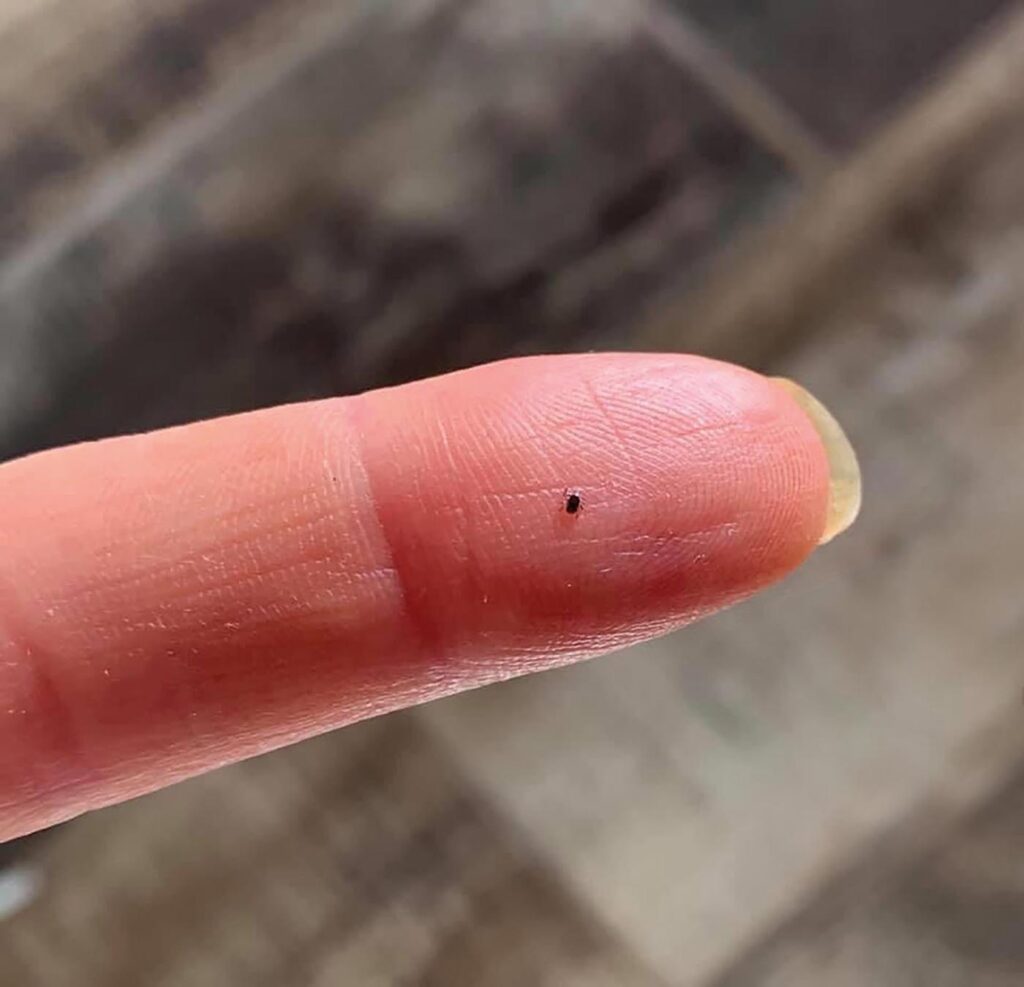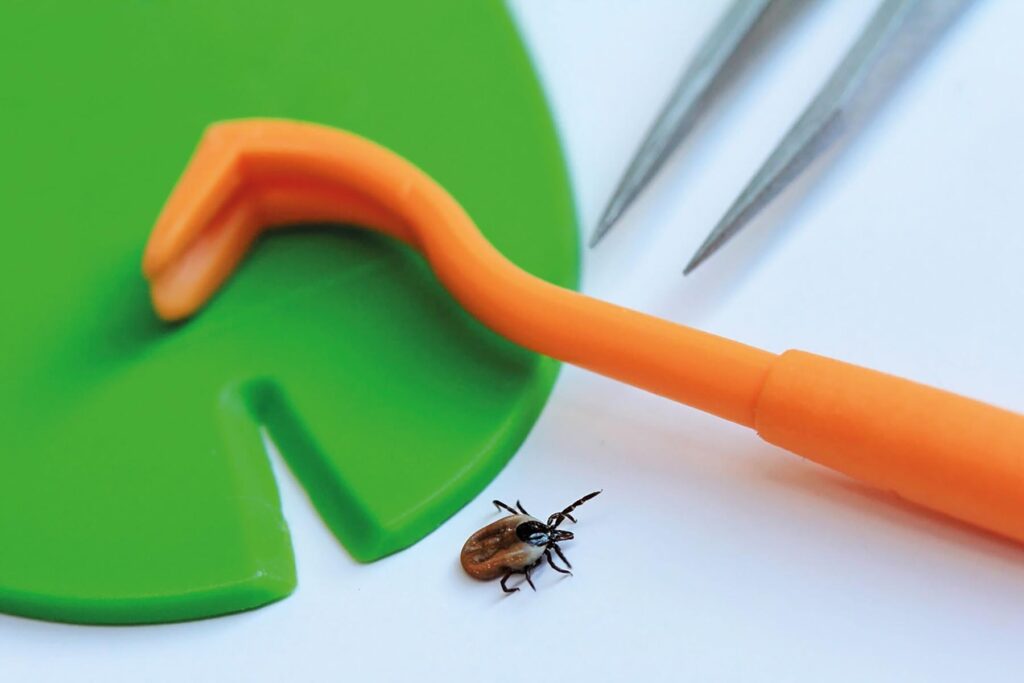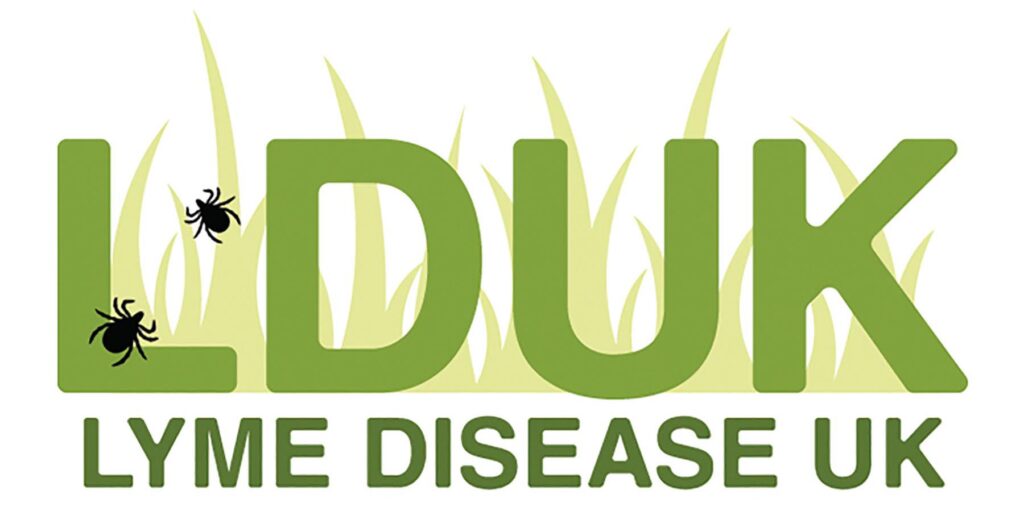Wake up to Lyme disease
Spring is here and the outdoors beckon. Many will be planning walks around the longer days and warmer weather, but enjoying the outdoors safely isn’t only about the weather, your skills and your kit.
Caroline Fearnley is Campaign Manager for Lyme Disease UK and, with May being Lyme Disease Awareness Month, she’s keen to work with partners like mountain rescue to spread the word and raise awareness.

Did you know that there’s a hidden danger lurking in the heather and the grass?
Ticks can now be found across every county in the UK and they seem to be becoming more widespread and prevalent. Ticks are usually found in grassy areas, woodland and heathland, but have even been found in urban parks and gardens.
It is estimated that around 10% of ticks in the UK carry Lyme disease, which is passed on to humans and animals through the bite of an infected tick. Given that Lyme disease can cause serious symptoms and early treatment is crucial, it’s important that walkers, climbers and others are aware of the precautions to take and what to do if bitten.

The charity Lyme Disease UK share some top tips below, as well as details of how to take part in Lyme Disease Awareness Month throughout May.
Don’t forget that ticks can be as small as a poppy seed, so they can easily be missed and you need to be on the lookout.

How can I prevent a tick bite?
Prevention is definitely the best option and preventing tick bites is crucial.
- Insect repellent should be applied during all outdoor activities and permethrin-treated outdoor clothing should also be considered for high-risk activities and occupations
- Avoid walking through long grass and stick to pathways wherever possible
- Wear light-coloured clothing, as this will make it easier to spot ticks on the fabric and then you can just brush them off
- Wear long sleeves and tuck trousers into socks — exposing bare skin by wearing short sleeves and wearing shorts is leaving yourself open to tick bites
- Shower and carry out a thorough tick check when you get home
- Talk to your vet about tick prevention products for your pets and check them daily for ticks too.
What should I do if I’m bitten?
If you find a tick on your skin, it needs to be removed very carefully so that you don’t leave any mouth parts embedded that could become infected. If you’ve been bitten at all, you need to be aware of possible Lyme disease symptoms (see below) and act quickly if you spot any of these or have concerns.
- Remove the tick as soon as possible using a tick removal tool. Follow the instructions which accompany the tool carefully.

- Alternatively, use fine-nosed tweezers. Grasp the tick as close to the skin as possible. Pull gently and firmly upwards. Do not twist or jerk.
- Never use oil, a match, Vaseline or any other unsuitable products
- After removal, wash your skin and hands thoroughly with soap and water
- Check your whole body for any other ticks
- Monitor for symptoms, which could take up to three months to appear. A full list of possible symptoms can be found at lymediseaseuk.com/symptoms
- If you experience symptoms after a tick bite, or after you may have been exposed to a tick bite, take photos of any rashes and go to your GP immediately.
How can I take part in Lyme Disease Awareness Month this May?
Lyme Disease UK is running a national Wake Up To Lyme campaign this May. There are many ways you can take part, including:
- Ordering free awareness leaflets and tick awareness cards via email.
- Purchasing tick repellent to wear outdoors.
- Wearing lime for Lyme on the 5th of May.
- If you’re a parent or a teacher, children can take part in LDUK’s poster design competition.
- Taking part in LDUK’s #TickWatch feature by emailing photos of ticks with a location.
Full details of how you can get involved can be found here: wakeuptolyme.com


Around 7 months ago I began to do a lot of research and came across Ayurveda treatment for Lyme disease it is a smashing one of a kind treatment for reversing Lyme. After using the Ayurveda treatment I got from i began to notice a reduction in symptoms till it all vanished. Going back to my farm work again gives me so much joy. I feel better and breath better. I Just wanted to share for people suffering from this horrible disease.. I was fortunate to have the loving support of my husband and family. I make it a point to appreciate every day!